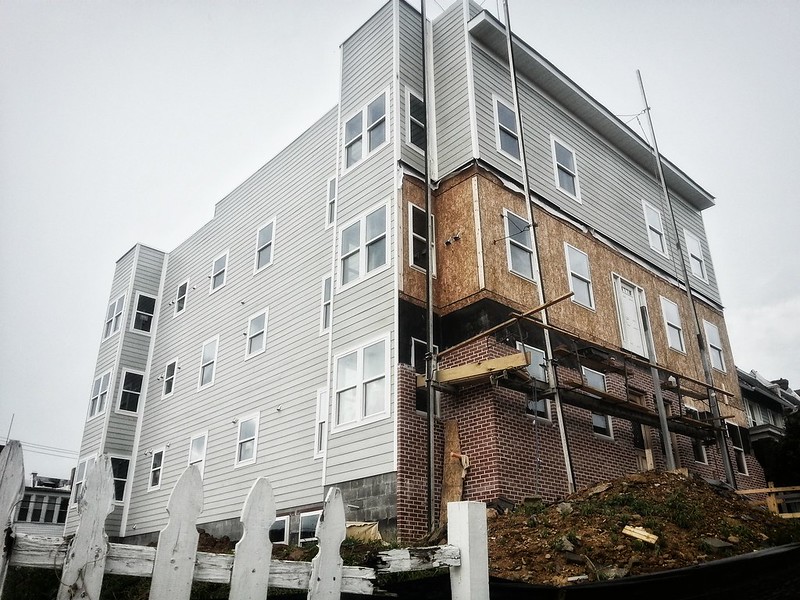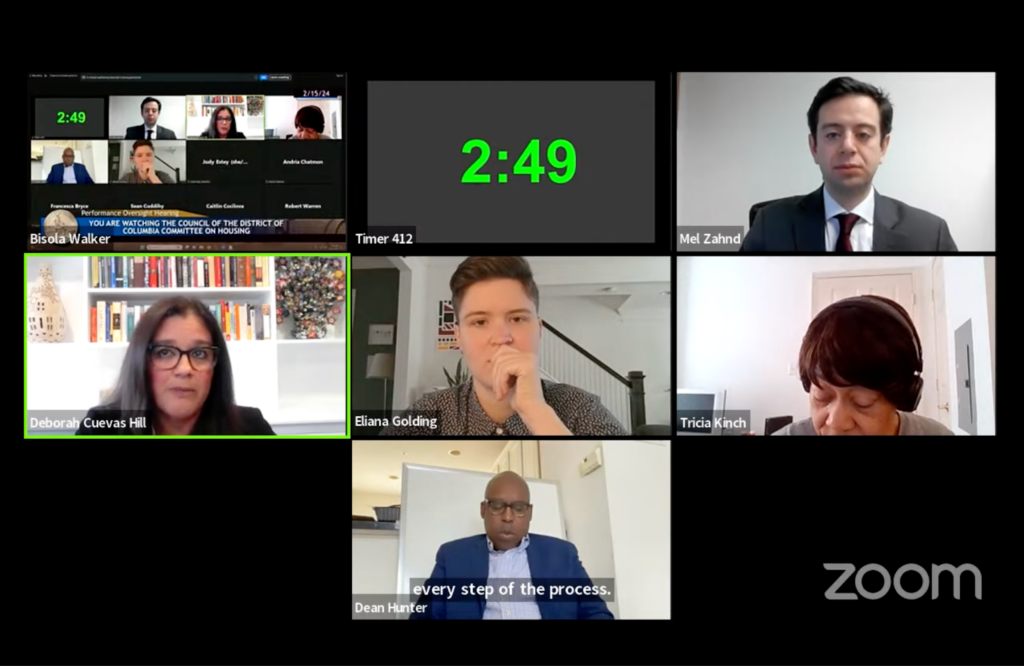The Housing Production Trust Fund, the District’s largest fund for creating affordable housing, is expected to receive $263 million as a result of a budget surplus. Despite the COVID-19 pandemic, D.C. had a budget surplus of $526 million for fiscal year 2020 and, by law, half of those funds would traditionally be automatically invested into the Housing Production Trust Fund.
Since the federal government had been reimbursing local governments through relief packages, the District was able to save significantly, resulting in this large surplus. However, considering needs related to the health crisis, this budget surplus stirred concern among officials and advocates.
“The [former] Chief Financial Officer of the District was a little bit conservative when creating his revenue estimate,” said Eliana Golding, an affordable housing and workforce development policy analyst at the D.C. Fiscal Policy Institute. “If we hadn’t been so conservative, the budget would have been larger for these services, and the money would have gotten out the door for people who desperately need it right now.”
D.C. councilmembers shared Golding’s criticism when the surplus was announced in February. Just two months before the surplus was announced, the D.C. Department of Human Services was seeking to cut hundreds of thousands of dollars worth of services for youth experiencing homelessness.
Mayor Bowser has made record investments in D.C.’s Housing Production Trust Fund every year since taking office and the fund has built or renovated more than 10,000 affordable housing units since 2001. But the program’s ability to produce enough housing for those most in need remains in question. “Affordable” applies to a wide range of projects.
The income limits to qualify for affordable housing programs are calculated as a percentage of D.C.’s Area Median Income, which is high given the extreme wealth and inequality inside the District, coupled with the D.C. “area” including several of the wealthiest counties in the U.S. Depending on the specific housing designation, an individual may earn as much as $70,000 — 80% of the AMI for a one-person household — and still qualify for assistance. Critics say that households earning 30% or less of the AMI should receive the lion’s share of support but do not even receive the legally required minimum amount of investment.
The Housing Production Trust Fund Act of 1988 requires that 50% of annual HPTF spending go to households with incomes below 30% of the AMI. Another 40% of spending is reserved for households with incomes between 30% and 50% of the AMI. And the balance may be spent to serve households with incomes up to 80% AMI. The District has only met this goal once in the last five years.
“Unfortunately, over the life of a trust fund, it’s really been totally skewed to the opposite end, where the majority, the overwhelming majority, of the funding has gone to the 80% inside of affordability,” said Brittany Ruffin, the affordable housing advocacy attorney at the Washington Legal Clinic for the Homeless.
The fund can’t do it all
“The real wrinkle with building housing for our lowest-income residents is that not only do you need to provide that gap financing on what we call the capital side, but you also need to provide an operating subsidy, which will be a housing voucher, which makes the unit affordable to the tenant, and basically subsidizes the rent with a government subsidy,” said At-Large Councilmember Elissa Silverman.
For every unit that is built for households 30% or below the AMI, a housing voucher must be provided to the tenant. D.C.’s HPTF funding is unable to cover these vouchers, which instead come from the D.C. Housing Authority and HUD.
The D.C. Department of Housing and Community Development acknowledges this lack of “deeply affordable” housing. “We know there is a need for more housing, including permanent supportive housing, targeting households in the 30% MFI and below income band and we are always exploring how we can leverage funds to create more housing in that range,” said Richard Livingstone, communications director for DHCD. (MFI and AMI are interchangeable in D.C.)
Livingstone said DHCD took advantage of a new aspect of the Low-Income Housing Tax Credit program in their most recent call for project proposals. The agency has also been working with the D.C. Department of Human Services, the D.C. Housing Finance Agency, and the housing authority to see how the small number of locally funded vouchers D.C. provides might be used as operating subsidies to help create more units through the HPTF, just like federal vouchers.
Still, housing advocates aren’t convinced. “If your goals are just to produce more housing, I think [the HPTF] is largely effective,” Golding said, “If your goals are really what it was designed to do, which is to boost the production of affordable housing, including deeply affordable housing, I would say it has not been tremendously successful.”
Efficiency and transparency
Which projects receive funding has also raised concerns. “What we don’t have, which is true in other jurisdictions, is a more transparent kind of decision process with a scoring mechanism that helps everyone understand why some projects are funded, and some are not,” said Martin Mellet, vice president at the nonprofit developer Jubilee Housing.
Applications for funding are “scored” based on how much housing of each affordability level will be produced for the proposed investment amount. In 2018, the D.C. Auditor released a report stating that a disbursement of more than $78 million across nine projects had included five projects that ranked at the bottom half of all applications received for that period, resulting in the city adding 353 fewer units of affordable housing than it could have. Out of the 353 lost units, 95 would have gone to families and individuals who earn 30% or below of the AMI.
The auditor’s report showed that during that specific application period, DHCD evaluated 28 proposals and proposed awarding funding to the nine highest-ranking projects. Auditor Kathleen Patterson called the process “transparent, competitive, and objective.” But after the agency’s recommendations were made, Mayor Muriel Bowser issued a press release announcing the funding awards and had replaced five of the recommended projects — those that ranked second through sixth — with other applicants whose projects ranked 11th, 12th, 15th and 20th.

“The director has the full authority to select projects and there needs to be more transparency around what projects are available, where projects are selected, why they’re selected,” Ruffin said.
According to Silverman, DHCD Director Polly Donaldson had said some of the projects scrutinized in the audit ranked higher because they provided more affordability but were not viable because they did not have the vouchers to subsidize the operating costs. However, the lowest-ranking project of the five replacements identified in the audit caught the attention of officials because the applicant was a politically connected developer, Taylor Adams.
“Adams used to work at [the Office of the Deputy Mayor for Planning and Economic Development] and is very close to the mayor.” Silverman said.”His project was the lowest ranked and it had been his third funding round, I think it had been ranked poorly all three funding rounds. So it’s not like he showed marked improvement in the last round and got funded.”
In 2019, five D.C. councilmembers introduced the Housing Production Trust Fund Transparency Amendment Act, calling to release detailed information on applications to the HPTF, including the release of the competitive scoring information.
“The point of it is to make sure that we are using the dollars in the prioritized way that’s outlined in the Housing Production Trust Fund law,” said Silverman, who co-introduced the bill. “What the transparency bill would do is just make that evaluation public so that we see how projects were evaluated and gives projects that didn’t get funding an insight into how perhaps they fell short and how they can do better the next time.” Silverman plans on reintroducing the bill in the new council period that started this year.
As a developer, Mellet of Jubilee Housing agreed. “I think that it would help to have some more transparency in understanding how decisions are made so we can get the details of who got the funds, because there’s always limited funds, and we compete with everyone else.”
The geographic diversity of HPTF projects has also notoriously been an issue. Projects have been historically congregated in wards 1, 7 and 8, predominately Black wards with the highest unemployment rates. With 80% of all HPTF projects located in these wards, less than 1% of new affordable housing is west of Rock Creek Park, sparking backlash from activists who cite the dangers of concentrating poverty.
Responding to the pandemic
At the start of Bowser’s second term in 2018, she committed to building 36,000 units of housing, including at least 12,000 units of affordable housing, by 2025. And last month, she and DHCD announced the selection of nine projects that are expected to produce and preserve over 1,100 affordable homes, including approximately 660 new homes. These projects are being funded primarily through a $66 million HPTF investment from the previous fiscal year.
While an unprecedented influx of cash may be heading toward the HPTF, talks of Bowser redirecting that money have stirred among officials and advocates. While fiscal year 2020 ended in an unexpected surplus, the District is on track for a deficit in its four-year financial plan. Some are advocating to use the one-year surplus to balance this expected deficit — which it could cover — instead of allowing the money to be split between the HPTF and another legally required account.
Over the last few years, the District has been steadily increasing investment in the HPTF, with $100 million proposed for fiscal year 2019 and $130 million for FY 2020. With potentially $263 million coming down the pipeline, the HPTF will be expected to meet the COVID-related housing needs. Bowser’s proposed budget will go to the D.C. Council for review at the end of May, an extended deadline to allow time for planning around additional federal relief.
“The gap is the biggest however, for the units that would be affordable for our lowest-income workers, and I think this is especially pronounced right now during COVID,” Silverman said. “You know, we are calling upon pharmacy tech workers and grocery store workers, mostly men but some women who are in our garbage disposal unit in city government, to report to work every day and do their jobs and we want them close to their jobs. Yet, they can’t afford to live here. They are absolutely vital to societal functions, that’s why they’re essential. But we don’t consider them essential when it comes to housing. And what the Trust Fund does is try to prioritize dollars going to those.”








